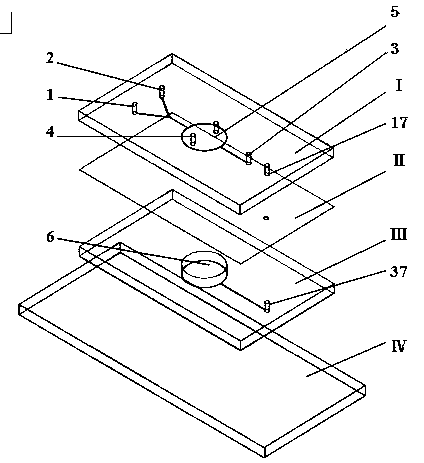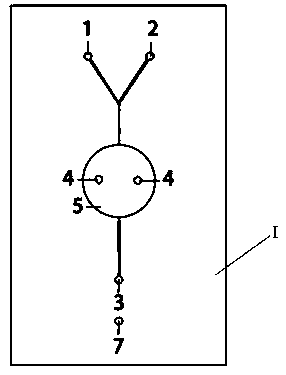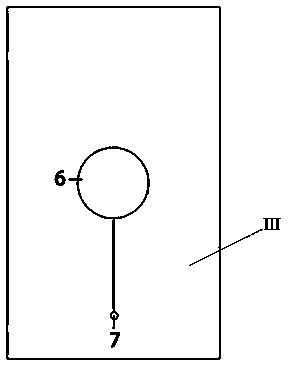Organ chip and method for evaluating interaction of nanoparticles and pulmonary surfactant layer based on organ chip technology
An organ chip and nanoparticle technology, applied in stress-stimulated microbial growth methods, biochemical equipment and methods, biochemical instruments, etc., to achieve the effect of complete functions and simple operation
- Summary
- Abstract
- Description
- Claims
- Application Information
AI Technical Summary
Problems solved by technology
Method used
Image
Examples
Embodiment
[0046] .An organ chip, consisting of four layers, from top to bottom are the first and third layers of PDMS layers I and III, the second layer of hydrophilic membrane II, and the fourth layer of glass sheet IV bonded and sealed. The first PDMS layer is formed, including extracellular matrix inlet channel 1, nanoparticle inlet channel 2, waste liquid outlet channel 3, air supply channel 4, and lung epithelial cell culture chamber 5; the third layer PDMS layer III is provided with an air pumping chamber 6 , communicated with the pumping channel 7 on the first PDMS layer I; where,
[0047]The two ends of the lung epithelial cell culture chamber (5) are connected to the Y-shaped channel formed by the intersection of the extracellular matrix inlet channel 1 and the nanoparticle inlet channel 2 and the waste liquid outlet channel 3, and the upper surface of the lung epithelial cell culture chamber 5 is connected to the air supply channel. 4 connected.
[0048] In this embodiment, t...
PUM
| Property | Measurement | Unit |
|---|---|---|
| Thickness | aaaaa | aaaaa |
Abstract
Description
Claims
Application Information
 Login to View More
Login to View More - R&D
- Intellectual Property
- Life Sciences
- Materials
- Tech Scout
- Unparalleled Data Quality
- Higher Quality Content
- 60% Fewer Hallucinations
Browse by: Latest US Patents, China's latest patents, Technical Efficacy Thesaurus, Application Domain, Technology Topic, Popular Technical Reports.
© 2025 PatSnap. All rights reserved.Legal|Privacy policy|Modern Slavery Act Transparency Statement|Sitemap|About US| Contact US: help@patsnap.com



